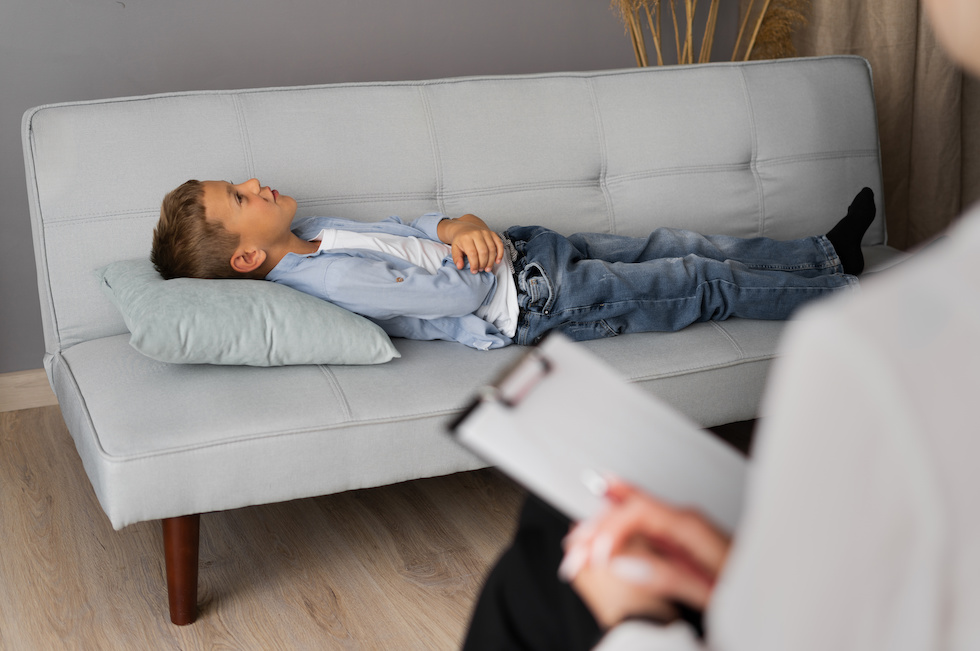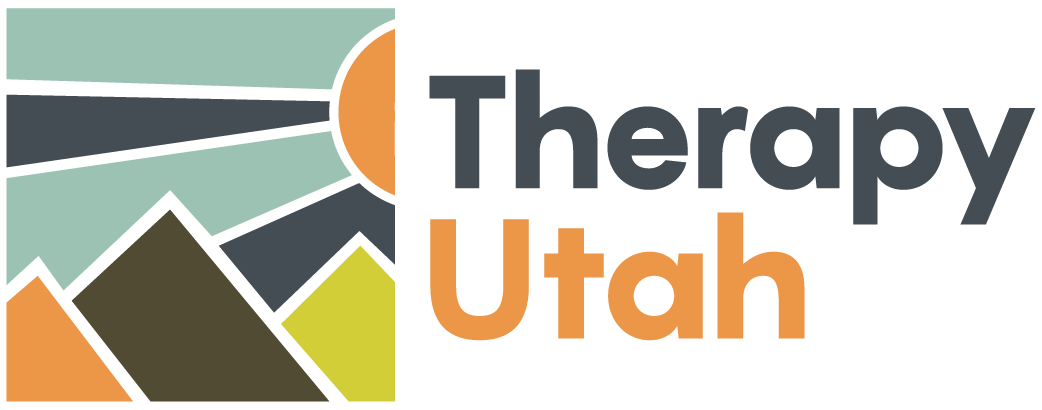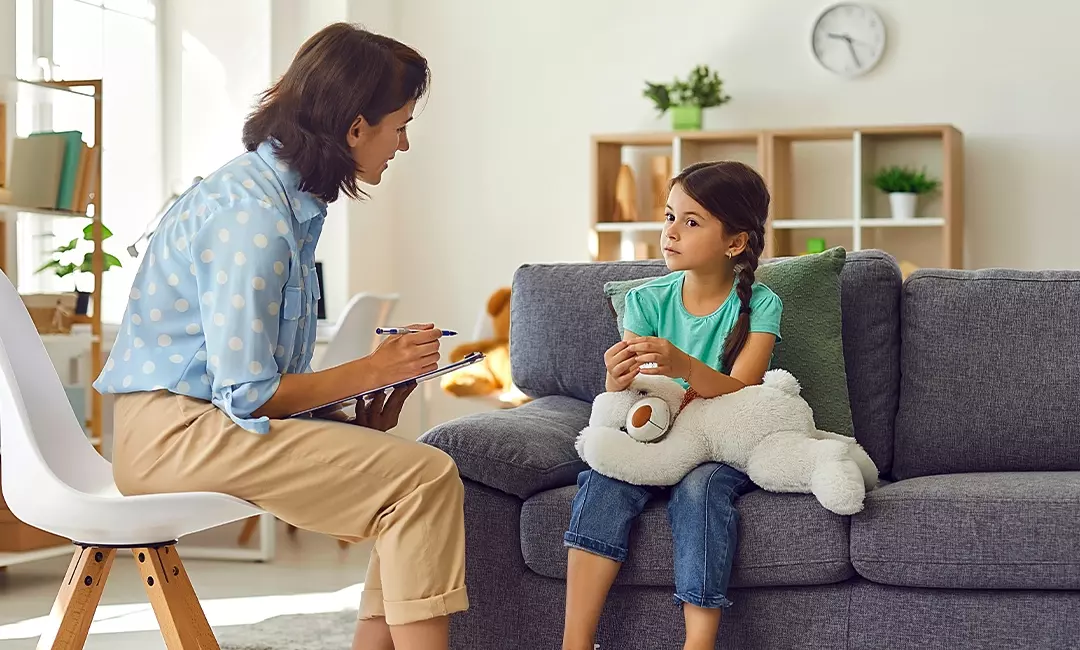Therapy Utah knows that there are many ways to support a child’s life and many ways to reduce negative experiences. ART (Accelerated Resolution Therapy) is one of the treatment techniques and methods we utilize in the world of pediatric mental health.
Our adolescent and children services provide essential resources for young people to be assessed, potentially diagnosed, and, most importantly, supported. Allow us to explore ART Therapy and what it offers when it comes to mental health wellness.
Table of Contents
- What is ART Therapy?
- Common Uses
- Potential Benefits
- How Does it Work?
- Potential Concerns
- The Role of Parents & Caregivers
- Conclusion
- FAQ

What is ART Therapy?
ART Therapy, also known as Accelerated Resolution Therapy, is an innovative and evidence-based psychotherapeutic approach designed to expedite the processing and resolution of distressing memories and emotions.
Using a unique combination of guided eye movements and memory visualization techniques, ART aims to provide a streamlined experience in addressing trauma-related issues and symptoms.
Learn more about what to expect when starting ART.
Common Uses
Many people will experience some type of trauma in their lifetime, such as the loss of a loved one, military deployment, or addiction issues, with some children having to endure those same situations at a much younger and more fragile point in their lives. ART is commonly used to treat a variety of mental health concerns including:
- Post-Traumatic Stress Disorder (PTSD)
- Anxiety
- Addiction
- Depression
- Phobias
- Grief
- Abuse
- Obsessive-Compulsive Disorder (OCD)
- And many other psychological health problems
ART therapy is one of the methods we offer at Therapy Utah via our individual therapy services, and we believe in its potential benefits because we’ve witnessed them firsthand.
Potential Benefits

The effectiveness of ART may vary from patient to patient, but there are some potential benefits to keep in mind when considering it as a possible treatment plan for your child including:
- Rapid-Alleviation of Trauma-Related Symptoms: ART is designed to facilitate a quicker resolution of traumatic memories, potentially offering children a more expedited path to healing.
- Reduction in Anxiety and Phobias: According to Science Daily, ART may be effective in reducing symptoms associated with mental health concerns such as anxiety, phobias, and stress.
- Non-Invasive Approach: ART is considered a non-invasive therapy as it does not employ medications or the use of traumatic stimuli.
- Improved Emotional Processing: Processing traumatic memories through ART may contribute to enhanced emotional regulation, helping children manage and cope with intense emotions more effectively.
- Enhanced Overall Well-Being: Successful ART interventions may lead to an overall improvement in a child’s quality of life, including better interpersonal relationships, increased engagement in daily activities, and a reduction in symptoms that impact daily functioning.
How Does it Work?

ART for children involves a structured process of guided eye movements and memory visualization to help them rapidly process and resolve distressing memories and emotions. This innovative approach aims to facilitate the reconsolidation of traumatic memories, leading to quicker and more efficient relief from symptoms associated with trauma, anxiety, and other mental health issues.
Some modifications may be necessary when utilizing ART with children, such as shorter session times. A typical session may include:
- Use of Play and Creative Techniques: Younger children may benefit from incorporating play, drawing, or other creative activities to help them express themselves and engage in the therapeutic process.
- Shorter Sessions: Attention spans may be shorter for younger children, so sessions may be adapted in terms of duration and intensity. It’s important to tailor the length of the session to the child’s needs.
- Simplified Language: The therapist uses simple and age-appropriate language to explain concepts and guide the child through the process. Metaphors and storytelling may be utilized to convey ideas more effectively.
- Parental Involvement: Depending on the child’s age, parents or caregivers may be actively involved in the therapy process. They can provide support and reinforcement at home, helping to generalize the therapeutic gains.
- Flexibility in Techniques: Therapists may be flexible in the use of techniques, considering the child’s preferences and comfort level. The therapist might adapt the approach based on the child’s response during the session.
- Use of Props and Visual Aids: Younger children may benefit from the use of props, toys, or visual aids to enhance their understanding of the therapeutic process.
Read more about the initial stages of ART here.
Potential Concerns
When considering various types of therapies for your child, you must look at all aspects—both benefits and disadvantages. Here are some potential concerns surrounding the utilization of the ART approach with children:
- Lack of Extensive Research: The majority of research surrounding the use of ART has been focused on adults. The benefits for the pediatric population may not be well enough established yet.
- Developmental Considerations: Children’s cognitive and emotional development differs from that of adults. Techniques used may not be developmentally appropriate for all age children and therapists must take into consideration the child’s stage of development when applying this intervention.
- Consent and Assent: Obtaining informed consent from both the child and their parents or guardians is crucial in any therapeutic intervention. Children may have a limited understanding of the therapy process, and therapists need to ensure that they explain the procedures and potential benefits and risks in an age-appropriate manner.
- Reactions to Trauma: ART involves the recall and processing of traumatic memories, which may elicit strong emotional reactions. Therapists need to be skilled in managing such reactions in children, ensuring that the therapeutic process does not inadvertently retraumatize the child.
Misconceptions & Reassurance
As with any therapeutic approach, there may be misconceptions about ART when applied to children. Keep in mind that the field is evolving, and the evidence base for ART with children may change over time. Some of those misconceptions include:
- ART is a quick fix for all trauma.
- Reassurance: While ART is designed to expedite the resolution of traumatic memories, it is not a one-size-fits-all solution. The effectiveness of any therapeutic approach, including ART, can vary depending on individual factors, the nature of the trauma, and the child’s unique needs.
- ART involves hypnosis or mind control.
- Reassurance: ART does not involve hypnosis or mind control. It employs specific techniques, such as guided imagery and eye movements, to help individuals process traumatic memories. The process is collaborative, and clients maintain control over their thoughts and experiences throughout the session.
- ART is not evidence-based.
- Reassurance: While research on ART with children may be limited, there is evidence supporting its effectiveness with adults in reducing symptoms related to post-traumatic stress. Ongoing research is expanding our understanding of ART, and the therapy should be administered by trained and licensed mental health professionals.
- Children cannot benefit from ART due to developmental differences.
- Reassurance: ART can be adapted to suit the developmental needs of children. Therapists with expertise in child psychology can modify the approach, using age-appropriate language, play therapy techniques, and creative activities to engage and support younger clients.
- ART replaces traditional talk therapy.
- Reassurance: ART is a specific therapeutic approach, but it can be integrated into a broader treatment plan that may include traditional talk therapy, psychoeducation, and other evidence-based interventions. The choice of therapy depends on the individual needs and preferences of the child.
The Role of Parents & Caregivers

Parents and caregivers play a crucial role in supporting their child’s experience with Accelerated Resolution Therapy (ART). Here are some ways in which parents and caregivers can contribute to and be involved in the therapeutic process:
- Education: Take the time to learn about ART, its principles, and the therapeutic process. This understanding will enable parents and caregivers to better support their child, answer questions, and participate more effectively in the treatment journey.
- Open Communication: Maintain open and honest communication with the child about the therapy process. Explain the purpose of ART, addressing any questions or concerns the child may have. A supportive and informed dialogue fosters trust and helps the child feel more comfortable with the therapy.
- Be Involved in the Assessment: Collaborate with the therapist during the assessment phase. Share relevant information about the child’s history, experiences, and any concerns. The therapist may also seek input on the child’s strengths, preferences, and coping mechanisms.
- Support Between Sessions: Encourage and support the child in implementing any strategies or exercises recommended by the therapist between sessions. This may include practicing relaxation techniques, engaging in activities that promote well-being, or maintaining a journal.
- Respond to Changes: Pay attention to changes in the child’s behavior, mood, or overall well-being. Share observations with the therapist during sessions to provide valuable insights into the child’s progress and any challenges they may be facing.
- Participate in Family Sessions: Some therapists may offer family sessions as part of ART. These sessions can provide a platform for open communication, address family dynamics, and enhance understanding among family members. Participate actively and openly in these sessions as needed.
- Be Patient: Recognize that the therapeutic process, including ART, may take time. Be patient and understanding of the child’s progress and any setbacks. Validate their feelings and experiences, emphasizing that healing is a gradual process.
Remember that each child is unique, and the level of involvement and support needed may vary. Regular communication with the therapist and a willingness to adapt and participate in the therapeutic process contribute to a more effective and holistic treatment experience for the child.
Conclusion
Accelerated Resolution Therapy holds potential benefits for children by offering a structured approach to processing and resolving traumatic memories. It may contribute to the reduction of PTSD symptoms, emotional regulation, and overall improvement in a child’s quality of life. However, the appropriateness of ART for a specific child depends on various factors, and it is crucial to consult with a mental health professional specializing in children’s mental health.
Contact us to talk through options for your child’s mental wellness.
Frequently Asks Questions About ART Therapy for Kids
What is ART therapy and how is it different from other types of therapy for children?
ART therapy is a form of psychotherapy developed to help individuals overcome a variety of mental health issues.
It involves elements of CBT (Cognitive Behavioral Therapy) and EMDR (Eye Movement Desensitization and Reprocessing), as well as several other techniques. The goal of ART is to help children process and resolve negative emotions and memories more rapidly than traditional therapies.
How long is a typical ART session?
Typical ART sessions will run 45 minutes to an hour. For children, it may be helpful to start with shorter sessions and ease them into the process.
What types of issues can ART address?
In addition to helping address phobias, it can be used to treat anxiety, depression, post-traumatic stress disorder (PTSD), behavioral challenges, and other trauma-related issues.
Are there any potential side effects or risks associated with ART for children?
ART is generally considered safe, but therapists carefully assess a child’s readiness for the therapy. Some children may experience temporary discomfort or heightened emotions during sessions, but serious side effects are rare.










